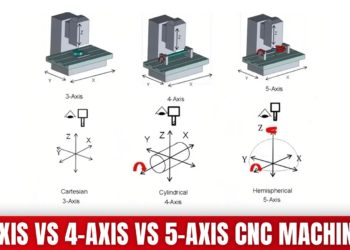In a financial landscape marked by contradictions, the Nasdaq has once again captured the attention of global investors. After a series of hesitant trading weeks shaped by geopolitical tension, cautious central bank rhetoric, and mixed economic indicators, the index has posted a notable recovery. Led by Apple and other tech giants, the Nasdaq closed more than 1% higher in its most recent session—a move that has raised both eyebrows and expectations.
In the face of stubborn inflation data and a U.S. Federal Reserve that remains vague about future rate adjustments, the Nasdaq’s strength reflects a deeper current in the financial psyche: investors are betting on innovation, scale, and the long-term durability of American tech.
Apple Leads, but Sentiment Is Broader
Apple’s strong performance is more than a headline. It encapsulates how market participants are starting to rotate back into what many consider the core of modern growth: software, hardware, and artificial intelligence. Apple’s upcoming product releases, its stable revenue streams, and an ecosystem that continues to expand internationally are acting as a magnet for capital. But the optimism isn’t limited to Cupertino.
Semiconductor firms, many of which have spent months caught in the crossfire of trade tensions and supply chain recalibrations, are showing signs of revival. Investors see the sector not as overbought, but as foundational. The same applies to cloud computing firms and AI infrastructure plays, whose long-term value propositions remain intact even in volatile macroeconomic conditions.
This broader lift gives the Nasdaq more stability than it had during previous rallies. Unlike last year’s rallies, which often relied on a narrow group of speculative names, the current push includes firms with solid fundamentals, consistent earnings, and real-world utility.
Policy Noise and Market Signal
To understand the significance of this Nasdaq momentum, we need to set it against the backdrop of the current economic conversation. The U.S. economy continues to send conflicting messages: unemployment remains low, but inflation is sticky; consumer sentiment is rising, but manufacturing output lags. Meanwhile, the Federal Reserve has maintained a careful tone, hinting at data-dependency and caution in its approach to future interest rate hikes.
This ambiguity has left equity markets directionless in recent weeks, with short-term traders grasping at every piece of macroeconomic data for clues. But the tech rally may be breaking that paralysis. Rather than waiting for central bank guidance, traders are watching earnings reports, corporate forecasts, and sectoral rotation. In other words, the market is reasserting its own logic—one that prioritizes private-sector resilience over government signaling.
And this shift matters. It shows a market willing to differentiate, to look under the hood of macro indicators and make judgments based on firm-level realities rather than central bank psychology alone. That’s a sign of maturity, and for many traders, it’s a welcome return to fundamentals.
Technicals, Tactics, and the Role of CFDs
From a technical perspective, the Nasdaq has now broken through key resistance levels, confirming the potential for a short- to medium-term uptrend. Momentum indicators are aligning, and volume patterns suggest conviction among institutional investors. Yet the path ahead is far from smooth.
This is where short-term trading strategies such as CFDs (Contracts for Difference) enter the conversation. For those actively tracking the nasdaq cfd price, the index’s volatility can be a source of both profit and peril. Quick shifts driven by earnings reports or macro data releases mean that traders need not only technical skill but also the psychological discipline to exit when momentum fades.
CFDs allow for leveraged positions, which means smaller market moves can generate outsized returns—or losses. As always, this requires risk management to be more than a buzzword; it must be embedded into every decision. Traders leveraging CFDs must read not just the numbers but the narrative: which sectors are being favored, how macro themes are evolving, and what geopolitical tremors might rattle an otherwise stable chart.
A Broader Implication: Confidence Is Shifting
There’s a philosophical dimension to all this, too. The Nasdaq rally, led by companies that are more associated with invention than tradition, suggests a growing confidence in adaptability. Markets are placing their faith not in static assets or defensive plays, but in companies that respond, iterate, and expand.
That shift matters in today’s context. It indicates a possible departure from the pessimism that dominated headlines in previous months. Rather than focus on what could go wrong, investors appear more interested in what’s already going right.
Of course, the rally may not last forever. Corrections are part of the game. But the significance lies not just in the percentage gained on a single trading day, but in the tone of the market. The Nasdaq, once seen as overhyped and dangerously speculative, is reasserting itself as a bellwether for real economic sentiment—particularly among those with a long view.
Conclusion: Keep Watching the Index That Reflects the Future
In a world where narratives change with the news cycle, and where policy uncertainty clouds many asset classes, the Nasdaq’s recent performance offers a rare sense of clarity. Whether you’re an institutional investor recalibrating your portfolio or a short-term trader focused on the next breakout, the message is the same: tech is not dead, and innovation remains the heartbeat of American finance.
For those willing to follow the momentum while keeping risk in check, the Nasdaq’s resurgence is more than a data point. It’s a signal that confidence is returning—and that the story of tech leadership in the financial markets is far from over.











































































